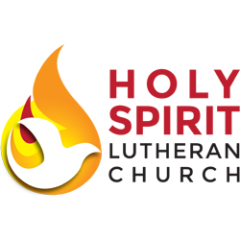In a recent sermon, you may remember me mentioning a lesser-known saint in our church’s history. This figure may have piqued your interest and so I wanted to give you a bit more background on him. May you draw inspiration from his life.
The Story of St. Kevin: A Journey of Prayer and Solitude
In the verdant hills of County Wicklow, Ireland, nestled between two serene lakes, lies the ancient monastic city of Glendalough. It is a place steeped in history and legend, a testament to the enduring spirit of one man whose life of prayer and solitude shaped its destiny—St. Kevin.
A Noble Beginning
Long ago, in the year 498 AD, a boy named Kevin was born into a noble family in Leinster. From the very start, there was something extraordinary about Kevin. His name, meaning “handsome birth,” seemed fitting for someone destined for greatness. But Kevin’s greatness was not to be found in the trappings of nobility or the pursuit of power. Instead, it was hidden in the depths of his soul, waiting to be awakened by a divine calling.
As a young boy, Kevin was sent to be educated by three wise and holy men: Eoghan, Lochan, and Enna. These mentors instilled in him a deep love for God and a fervent desire for prayer. While other boys dreamed of knighthood and glory, Kevin found his heart drawn to the quiet contemplation of the divine.
The Hermit of Glendalough
At the age of 25, Kevin felt an irresistible pull towards a life of solitude. He bid farewell to his family and friends, leaving behind the comforts of his noble life to seek God in the wilderness. He wandered through the lush valleys and rugged hills until he reached the secluded haven of Glendalough.
There, by the Upper Lake, Kevin discovered a small cave. It was a humble abode, but for Kevin, it was a sanctuary. In this natural cathedral, surrounded by the whispering trees and the murmuring waters, Kevin began his life as a hermit. He dedicated himself to prayer, fasting, and penance, seeking to purify his soul and draw closer to God.
A Solitary Life
Kevin’s days were marked by a rhythm of prayer and stillness. He would stand for hours with his arms outstretched in prayer, his eyes closed, and his heart open to the divine. His connection with nature was profound; he saw the beauty of God’s creation in every leaf, every stone, every creature.
One day, as Kevin stood in prayer, a blackbird flew down and perched on his outstretched hand. The bird, sensing the saint’s gentleness, began to build a nest. Kevin remained perfectly still, allowing the bird to lay her eggs and tend to them. He stayed in that position until the eggs hatched and the fledglings flew away, a testament to his patience and his deep respect for all living things.
The Birth of a Monastery
Despite his desire for solitude, Kevin’s holiness could not remain hidden. Word of the hermit’s sanctity spread, and soon, seekers began to find their way to Glendalough. They came in search of wisdom, guidance, and a glimpse of the divine that shone so brightly in Kevin’s life.
Recognizing the need to nurture these souls, Kevin founded a monastery at Glendalough around 540 AD. The monastic community grew, becoming a center of learning, prayer, and hospitality. Kevin, now abbot, balanced his solitary prayers with communal worship, teaching his followers the importance of both personal devotion and collective faith.
The Gentle Saint
St. Kevin was not just a man of prayer; he was a man of profound compassion. He cared for the sick, comforted the sorrowful, and offered counsel to those in need. His gentle nature and deep spirituality attracted people from all walks of life. Farmers, scholars, and even kings sought his wisdom and blessing.
One of the most touching stories is of a young boy who was brought to Kevin, blind and crippled. Kevin prayed fervently over the child, and miraculously, the boy’s sight and mobility were restored.
Legacy of Glendalough
Kevin’s legacy continued long after his death in 618 AD. The monastery at Glendalough flourished, becoming a renowned center of learning and spirituality. Pilgrims traveled from far and wide to visit the sacred valley, to pray at the places where Kevin had prayed, and to feel the spiritual presence that lingered in the air.
Today, the ruins of Glendalough stand as a silent witness to Kevin’s enduring legacy. The round tower, the stone churches, and the serene lakes all tell the story of a man whose life was a symphony of prayer and solitude. Visitors to Glendalough say they can still feel the sacredness of the place, a testament to Kevin’s unyielding devotion.
The story of St. Kevin is one of devotion, simplicity, and the transformative power of prayer. From his noble beginnings to his solitary life in Glendalough, Kevin’s journey is a beacon of light for those seeking a deeper connection with the divine. As we reflect on his life, may we be inspired to find our own sanctuaries of prayer, to seek the divine in the quiet moments, and to live in harmony with the world around us. St. Kevin’s legacy is a reminder that in the stillness of prayer, we can discover the profound presence of God in all things.

